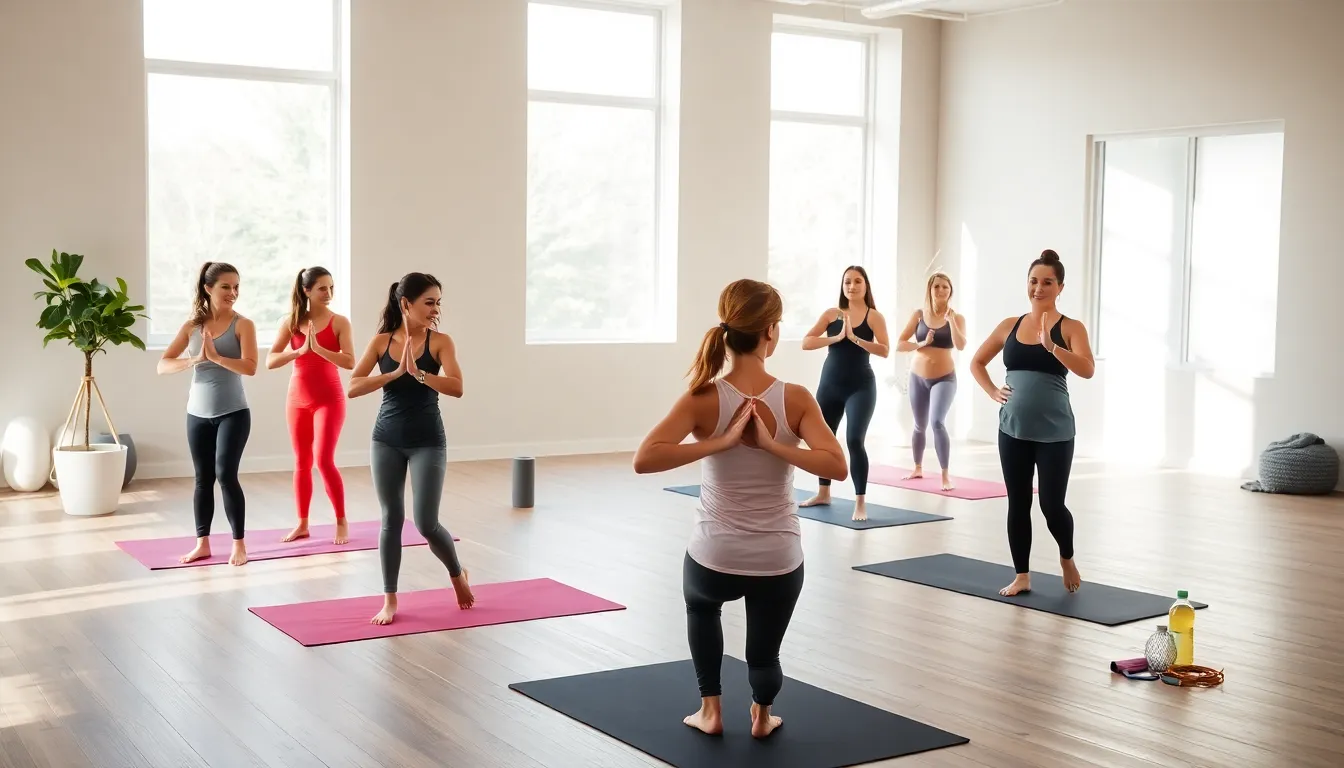Welcoming a new life is pure joy, but let’s face it, your body has just undergone a monumental marathon. Think of childbirth as running a three-day ultra-marathon, perhaps without the training (and with a lot more screaming). Add to that the sleepless nights and diaper duties, and it’s no wonder many new parents feel a bit like jelly. But don’t worry. Postpartum recovery exercise can be your ticket back to feeling like yourself (and possibly a superhero). In this guide, we’ll explore everything you need to know about safely getting back to movement after childbirth, with an honest look at what’s changing in your body, the benefits of exercising postpartum, and how to get started without cringing at the thought of a jumping jack. Let’s immerse.
Table of Contents
ToggleUnderstanding Postpartum Recovery

Recovery postpartum is more than just physical, it’s a holistic journey of reestablishing the self. During this time, it’s vital to understand the changes happening within her body and mindset.
Physical Changes After Childbirth
After childbirth, every woman’s body goes through numerous transformations. From hormonal fluctuations to healing tissues, it feels like your body is hosting its own science experiment. These changes can include weight fluctuations, pelvic floor issues, and abdominal separation known as diastasis recti. Understanding these changes is the first step toward recovery. Some women might experience lowered energy levels or physical discomfort, making gentle movement essential.
Emotional Well-Being During Recovery
Now, let’s talk about those feelings. The postpartum period can bring a cocktail of emotions, including joy, anxiety, and sometimes a case of the “baby blues.” Exercise, surprisingly, can be an excellent remedy for enhancing emotional health. It releases endorphins, those feel-good hormones that can help combat feelings of sadness or anxiety. Knowing that nurturing both the mind and body is important can make a big difference in recovery.
Benefits of Exercise in Postpartum Recovery
Getting back into some form of movement can pave the way for a smoother recovery. Let’s break down how
Improving Physical Health
Exercise post-baby can help regain strength and improve cardiovascular health. It might sound daunting, but starting with light exercises can help her body recover its previous strength and possibly even improve on it. Stronger core muscles can lead to better posture, decreased back pain, and a more stable pelvic floor.
Boosting Mental Health
Regular movement promotes overall well-being. Research shows that exercise significantly reduces the risk of postpartum depression and anxiety. By incorporating physical activity, she’s not just working on her body: she’s also nurturing her mental space, which is equally important. Feeling accomplished with her workout can fill her with a sense of achievement and well-being.
Safe Postpartum Exercises to Begin With
If she’s ready to get moving, what’s the best approach? Starting with safe and simple exercises can open the door to a stronger journey.
Gentle Movements and Stretching
Gentle movements such as walking or mild stretching are incredible for initiating the recovery process. Incorporating pelvic tilts, seated stretches, or light yoga can help realign her body, encourage blood flow, and provide gentle relief to tight muscles.
Strength Training for New Moms
Strength training might sound like a hefty commitment, but it doesn’t have to be. Using her body weight, resistance bands, or light dumbbells can help build strength gradually. Focus on exercises targeting major muscle groups: squats, wall push-ups, and lunges. These can be done at home and integrated into short bursts throughout her day.
Cardiovascular Exercises to Consider
Once she feels up for it, consider light cardiovascular exercises like brisk walking, cycling, or swimming. These activities don’t just help with weight management but also enhance energy and mood levels. Aim for 20-30 minutes of cardio, and remember, those short bursts add up.
Creating a Sustainable Exercise Plan
Setting herself up for success means creating an exercise plan that fits into her lifestyle.
Setting Realistic Goals
When it comes to postpartum recovery, realistic goals win the race. Instead of aiming for immediate fitness, focus on gradual progress. Start small, perhaps 10-15 minutes of walking a few times a week, and increase it when she begins to feel comfortable. She’ll be more likely to stick with her plan if it feels achievable.
Incorporating Exercise into Daily Life
Exercise doesn’t have to feel like a chore. Finding ways to incorporate movement into daily life can make it more enjoyable. Simple habits like taking the stairs, dancing during diaper changes, or pushing a stroller briskly can turn mundane activities into lively workouts.
When to Seek Professional Guidance
While some may dive headfirst into their exercise routines, others might need additional support.
Consulting Your Healthcare Provider
It’s essential for any new parent to consult their healthcare provider before starting an exercise plan. A professional can provide tailored advice based on individual health needs and recovery progress. Ignoring this step could lead to unnecessary complications, so it’s a worthwhile conversation.
Finding a Postpartum Exercise Specialist
If she feels overwhelmed or uncertain, seeking help from a postpartum exercise specialist can be beneficial. These professionals understand the unique challenges faced during recovery and can offer personalized guidance, ensuring new moms get the support they need.



